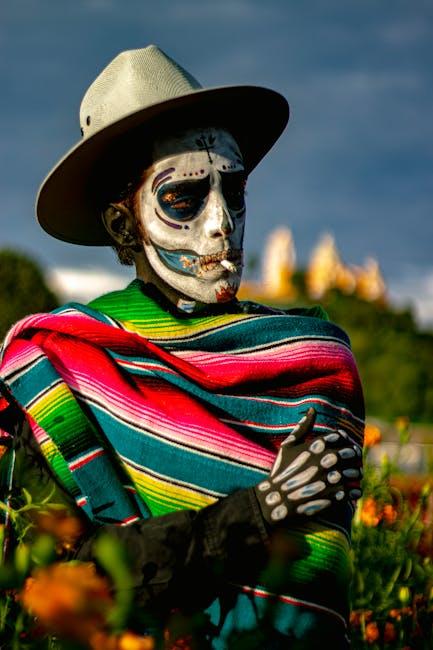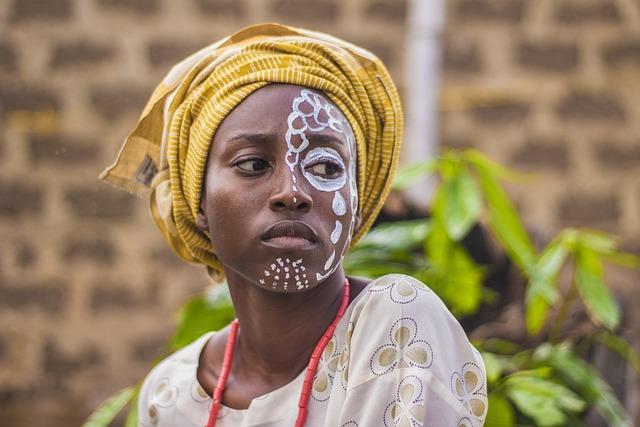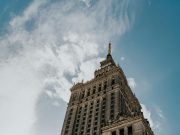In the bustling heart of Western Europe, where cobblestone streets meet cutting-edge architecture, a subtle tension brews beneath the surface. It’s a dance between the age-old traditions that have shaped these lands for centuries and the relentless wave of global trends that sweep across borders with ease. As the world becomes increasingly interconnected, cultures that once thrived in splendid isolation now find themselves in a complex tapestry of influences. This article delves into the intricate interplay between local customs and global phenomena, exploring whether the vibrant cultures of Western Europe are being overshadowed or if they are finding new ways to thrive in this ever-evolving landscape. Through the lens of history, art, and everyday life, we embark on a journey to understand how the essence of local identity navigates the currents of globalization.
Cultural Fusion or Cultural Erasure Examining the Balance in Western Europe
In the vibrant tapestry of Western Europe, the interplay between local traditions and global influences creates a complex mosaic. On one hand, the region thrives on the rich diversity that comes from embracing global trends, which infuse new energy into art, cuisine, and fashion. However, this cultural fusion often raises concerns about the potential overshadowing of indigenous customs and practices. Local festivals, dialects, and culinary traditions may face the risk of being relegated to the background as international brands and global media content dominate everyday life.
- Music and Entertainment: While international music charts and Hollywood films capture widespread attention, local musicians and filmmakers strive to maintain their unique voices.
- Cuisine: The culinary landscape is a battleground where fast food chains and global flavors meet age-old recipes and traditional dining experiences.
- Language: English, as a global lingua franca, often challenges the preservation of regional dialects and languages.
Finding a balance between cultural fusion and erasure requires a conscious effort to celebrate and preserve local heritage while welcoming global influences. It is this intricate dance that defines the cultural identity of Western Europe today.

The Role of Technology in Shaping Modern Cultural Identities
In today’s interconnected world, technology acts as a double-edged sword in shaping cultural identities across Western Europe. On one hand, it serves as a powerful platform for preserving and promoting local traditions and languages through digital storytelling, online communities, and social media campaigns. On the other hand, it also facilitates the rapid dissemination of global trends, sometimes overshadowing local cultures with the ubiquitous appeal of international pop culture, fashion, and lifestyle.
- Preservation through Digital Archives: Local history and folklore are being digitized, allowing for easy access and safeguarding against the erosion of cultural memory.
- Global Influence: Streaming platforms and social media algorithms often prioritize content with universal appeal, leading to the dominance of certain global narratives.
- Cultural Exchange: Technology fosters an environment where diverse cultures can intermingle, offering opportunities for both enrichment and dilution of local customs.

Strategies for Preserving Local Traditions Amidst Globalization
- Embrace Local Languages: Encouraging the use of regional dialects and languages in schools, public spaces, and digital platforms can help maintain cultural identity. Community events can celebrate linguistic diversity, fostering a sense of pride and belonging.
- Promote Traditional Arts and Crafts: By supporting local artisans and craftspeople, communities can keep age-old techniques alive. Hosting workshops, exhibitions, and markets not only showcases these skills but also educates younger generations about their heritage.
- Incorporate Local Cuisine in Modern Dining: Restaurants and cafes can offer traditional dishes with a contemporary twist, making them appealing to both locals and tourists. This not only preserves culinary traditions but also stimulates local economies.
- Utilize Technology Wisely: Digital platforms can be powerful tools for sharing and preserving traditions. Virtual museums, online storytelling, and social media campaigns can highlight local customs, reaching a global audience while keeping the essence intact.
- Engage the Youth: Empowering young people to participate in cultural preservation through educational programs and community projects ensures the transmission of traditions. Encouraging innovation within tradition can also make cultural practices more relevant to younger generations.

Empowering Communities to Embrace and Celebrate Cultural Diversity
In the vibrant tapestry of Western Europe, where centuries-old traditions weave seamlessly with modern influences, the question of whether local culture is being overshadowed by global trends remains a poignant topic. Local communities, from the bustling streets of Barcelona to the serene landscapes of the Scottish Highlands, are finding innovative ways to balance their rich heritage with the influx of international trends. They are not just passive observers but active participants in a cultural dialogue that champions both the preservation and evolution of their identities.
Communities are embracing this duality by fostering spaces where cultural diversity is celebrated and understood. Initiatives are springing up across the region, focusing on:
- Cultural festivals that showcase local art, music, and culinary traditions alongside global influences.
- Educational programs in schools that teach children the value of both local and global cultures.
- Collaborative projects that bring together artists and creators from different backgrounds to produce unique cultural expressions.
These efforts reflect a conscious decision to not let local culture be eclipsed but rather enriched by global perspectives, ensuring that the essence of what makes each community unique is not only preserved but also celebrated on a wider stage.
Key Takeaways
As we stand at the crossroads of tradition and modernity, the interplay between local culture and global trends in Western Europe continues to shape the narrative of our times. While the winds of globalization bring a wealth of opportunities and connections, they also challenge the very essence of regional identities that have been nurtured over centuries. This dynamic dance between the old and the new is neither a tale of loss nor a celebration of progress, but rather a complex tapestry woven from threads of history, innovation, and adaptation.
In this intricate balance, the future of Western Europe’s cultural landscape remains a canvas of possibilities. As communities navigate this evolving terrain, the stories of resilience, reinvention, and revival will undoubtedly emerge, offering new perspectives on what it means to preserve and promote local heritage in an interconnected world. Whether these global influences will overshadow local traditions or enrich them, the dialogue between the past and the present continues, inviting us all to participate in shaping the cultural legacy of tomorrow.
As we close this chapter, the question lingers: will the melodies of local cultures find harmony amidst the symphony of global trends, or will they echo as whispers in the cacophony of change? Only time will reveal the answer, as we collectively pen the next verse in the ever-evolving song of Western Europe’s cultural identity.

































